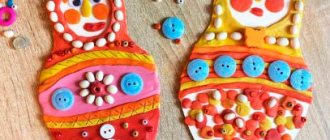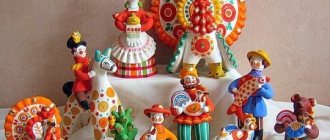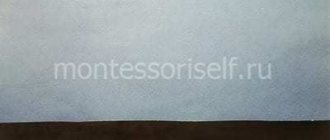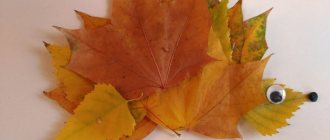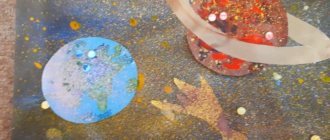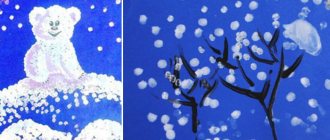Notes on drawing with elements of appliqué in the senior group “Dymkovo Beauty”
Municipal budgetary preschool educational institution "General developmental kindergarten No. 31" Zhemchuzhinka " EMR RT
Abstract of GCD on drawing with elements of application in the senior group on the topic
"Dymkovo Beauty"
Compiled by: Visual arts teacher
Tokayuk K.V.
Program content.
Continue to teach children how to make a pattern based on the Dymkovo masters. Use the following pattern elements - circles of different sizes, dots, straight and wavy lines. Strengthen the drawing skill with the end of the brush, dabbing. Develop a sense of color when creating a pattern based on the Dymkovo masters. Cultivate interest in folk arts and crafts.
Preliminary work.
The teacher's stories about craftsmen from the village of Dymkovo with an examination of Dymkovo toys. Drawing elements of Dymkovo painting during classes. Decorative applique based on samples from Dymkovo masters.
Materials and equipment.
An envelope for each child with a flat image of the Dymkovo young lady. Oilcloths, napkins, hard-bristled brushes, glue, brush supports (for applique). Gouache, brushes, jars of water, napkins (for drawing).
GCD move:
Children stand around the teacher.
— Children, today such an unusual carpet arrived in our mailbox. Look at him and try to guess: where is he from? (from Dymkovo).
- How did you guess? (The envelope shows Dymkovo toys).
The teacher takes out the letter and reads:
“Dear children from the Zhemchuzhinka kindergarten, we have received your drawings with Dymkovo patterns. We really liked your drawings and decided to send you our beauties. We have already painted them a little, and you will finish using our samples. If you write the same as we did, you will have real Dymkovo souvenirs in your group.”
- Guys, let's see what kind of beauties the masters from Dymkovo sent us. For each of you they have prepared an envelope, and in it is a young lady. There is a sample on the envelope, look - not only is it drawn, but there are also elements of appliqué. The envelope contains ready-made forms that need to be pasted as on the sample. Everything else will need to be painted.
Let's imagine that we are real masters. You need to get ready for work, get yourself in order.
I will give each person an envelope and you will go to your seats. And music will help you with this - a Russian folk melody that reminds you of these amazing bright and colorful toys.
(Children are working).
(After completing the application, physical education is carried out).
— Guys who have finished their work and think that it turned out well, quietly come to our stand and we will hang your work on the left. And those who believe that their work has failed today will hang their work on the right.
Analysis.
Let's stand in a semicircle and see what we've got.
— Why, if you look at these works, can you say that they were painted like the Dymkovo masters? (bright, rich colors, the use of elements of Dymkovo painting - straight and wavy lines, large and small circles, dots and rings).
— Which works did you like best? Why?
— Today everyone tried very hard, so the works turned out like real Dymkovo toys, they greatly decorated your group. I think that we will write a letter to Dymkovo and thank the masters for the gifts.
Integrated lesson on application in the preparatory group
Educator: Shows the nesting dolls standing on the table.That's right, these are nesting dolls. Yes, how beautiful.
I'll tell you the story of the nesting doll
There is such a legend. A wealthy merchant brought a figurine from Japan to his estate in the village of Abramtsevo near Moscow. The Japanese toy had a secret. His whole family was hiding in the old man Fukurumu (slide 1) One day, guests came to the merchant, and the hostess showed everyone a funny figurine. The detachable figurine interested the artist Sergei Malyutin. He decided to do something similar. He did not repeat the Japanese toy.
(slide 2) I made a sketch of a round-faced peasant lady in a colorful headscarf, dressed her in a Russian sundress, and to make her look more interesting, he drew a black rooster in her arms.
The next young lady had a sickle in her hand. Another one with a loaf of bread. What about the sisters without their brother - and he appeared in a painted shirt. A whole family, friendly and hardworking. He ordered the best turner of the Sergiev Posad educational and demonstration workshops, Vasily Zvezdochkin, to make his incredible work.
And he called it Matryoshka.
Why do you think Matryoshka is named this way?
The name Matryona was then widespread, hence the name. Why is she dressed like that? Girls of those years wore such outfits. The matryoshka symbolizes the image of a Russian girl. The first nesting doll consisted of eight dolls.
Matryoshka is a Russian toy made of wood in the form of a painted doll, it is divided into two halves, inside it there are the same smaller dolls. The number of dolls nested inside each other can be from three or more.
Nowadays matryoshka dolls are made in various workshops. The method of making nesting dolls has remained unchanged for many years. You need to choose the right wood. (slide 3) This is how a workpiece is processed on a machine. The smallest non-dismountable doll is made first. Then they start making a second doll, a little larger, and divide it in half. The bottom part is done first. The wood is then removed from the inside of both parts of the second doll so that the smaller doll fits snugly inside. Having made the second doll, proceed to the third and so the required number of times.
(slide 4) Look at this photo and you can see in cross-section how the nesting dolls are located inside.
After making the blanks, they are still dried and varnished. (slide 5)
Then the artists paint it. They use different paints, but most often gouache. (slide 6)
The matryoshka has become a symbol of native Russian culture and the most traditional souvenir from Russia. That's how many nesting dolls are sold for different tastes. (slide 7)
